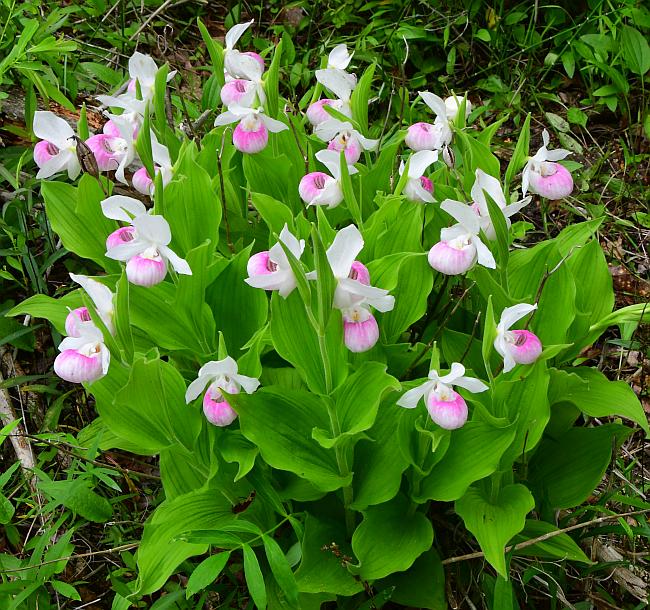Cypripedium reginae Walter
Showy Lady's Slipper

Native
CC = 10
CW = -3
MOC = 9
© SRTurner
Cypripedium reginae WalterShowy Lady's Slipper | |
 |
Native CC = 10 CW = -3 MOC = 9 |
© SRTurner |
|
Family - Orchidaceae Habit - Rhizomatous perennial forb. Stem - Ascending to erect, to 1 m, usually densely hairy and glandular, with 1 or 2 (3) flowers.
Leaves - Alternate, simple, sessile, 3-10 per flowering stem, 15-25 cm long, more than 4 cm wide, ovate, the surfaces somewhat ribbed or corrugated and hairy.
Inflorescence - Spikes with 1-3 flowers per stem, each flower subtended by a bract. Flowers - Sepals 3.0-4.5 cm long, broadly elliptic, flat or slightly arching, white. Lateral petals 2.5-4.5 cm long, shorter than to about as long as the lip, oblong-elliptic, flat or slightly arching, not spirally twisted, white. Lip 3-5 cm long, enlarged to form an obovoid slipperlike pouch, the margins rolled inward along the edge of the opening, white, tinged with pink, the inside surface with reddish purple streaks. Column 15-25 mm long, the staminode ovate, white with red spots and yellow areas toward the margins.
Fruit - Capsules borne erect or nearly so, 20-30 mm long, elliptic in outline, strongly ribbed.
Flowering - May - June. Habitat - Seepy ledges of sheltered, north-facing dolomite bluffs, less commonly along moist stream banks and in fens. Origin - Native to the U.S. Lookalikes - None when flowering. Vegetatively similar to other members of the genus. Other info. - When flowering this plant is unmistakable, with a healthy specimen often bearing a dozen or more pink, slipper-shaped flowers. The species is most common in northeastern parts of the U.S. and also Canada. In Missouri it is uncommon, partly due to its strict habitat requirements and partly from unscrupulous poaching of plants from the wild. There is little purpose in attempting to transplant orchids from the wild into gardens. Their strict requirements of several habitat variables, including mycorrhizal soil associates, usually doom such endeavors. Photographs taken in Missouri. |